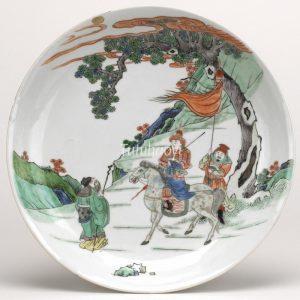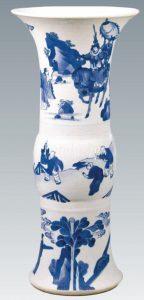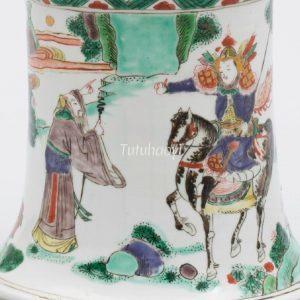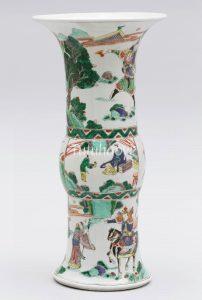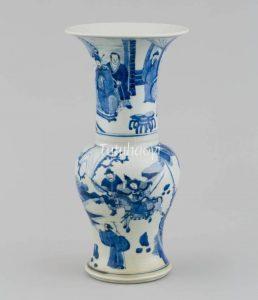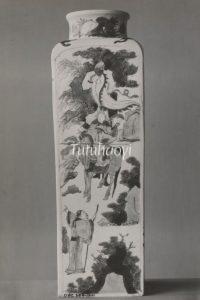Lu Xun Seeking a Way Out of the Maze
陆逊问津
© Tutuhaoyi.com owns the copyright of the description content for the images attached. Quoting all or part of the description content on this page is permitted ONLY IF ‘Tutuhaoyi.com’ is clearly acknowledged anywhere your quote is produced unless stated otherwise. (本页描述内容版权归Tutuhaoyi.com所有,转发或引用需注明 “Tutuhaoyi.com”, 侵权必究, 已注开源信息的条目除外。)
In Chapter 84 of Romance of the Three Kingdoms, ‘Lu Xun Burns Seven Hundred Miles of Camps; Kongming Lays Out the Eight Formations,’ the flames of Lu Xun (陆逊, 183–245)’s assault drive Liu Bei into headlong flight. Eager to finish his foe, Lu Xun presses on to the riverbank, unaware that he has entered the fabled ‘Eight Formations’ set by Zhuge Liang (诸葛亮, 181–234), courtesy name Kongming. What appears to be no more than scattered mounds of stones conceals a labyrinth of death; once the ‘Gate of Death’ is crossed, no living man may escape.
As dusk bleeds across the horizon, a furious gale howls through the stones, whipping up clouds of sand and gravel. Lu Xun orders a retreat, but no exit can be found, and escape proves impossible. Realisation strikes—Lu Xun has stumbled into Kongming’s snare. Just then, an old man steps into his path, offering to lead the army out. This is Huang Chengyan, Zhuge Liang’s father-in-law. Years before, when Kongming laid the formation, he confided the secret to Huang, warning him never to rescue a general of Eastern Wu who might blunder into it.
Yet Huang, professing a lifelong devotion to virtuous deeds, could not bear to watch a man be lost to the maze. Disregarding his son-in-law’s orders, he guided Lu Xun and his men through the winding paths, delivering them from the jaws of certain ruin.
Story scene description by Rachel Ma
Other figural story scenes from Romance of the Three Kingdoms:
The Couple’s Tryst in the Phoenix Pavilion Making Dong Zhuo Fly into a Fury 董卓大闹凤仪亭
Liu Bei and Sun Quan chopping stone 刘备孙权砍石问天(孙刘试剑)
General Zhou Yu Flogging Huang Gai 周瑜打黄盖 (苦肉计)
Fig 1: famille verte porcelain dish, Kangxi period (1662–1722), Qing dynasty, courtesy of the Trustees of the British Museum
Fig 2: porcelain vase with underglaze blue decoration, Kangxi period (1662–1722), Qing dynasty, courtesy of the Palace Museum, Beijing
Fig 3-4: famille verte porcelain vase, Kangxi period (1662–1722), Qing dynasty, courtesy of The Royal Dresden Porcelain Collection, Dresden State Art Collections, Germany, Inv. no. PO 6321
Fig 5: porcelain vase with underglaze blue decoration, Kangxi period (1662–1722), Qing dynasty, courtesy of The Royal Dresden Porcelain Collection, Dresden State Art Collections, Germany
Fig 6: square vase of porcelain with underglaze blue and wucai overglaze enamelled decoration, c. 1650-1670, courtesy of the Victoria & Albert Museum, London
